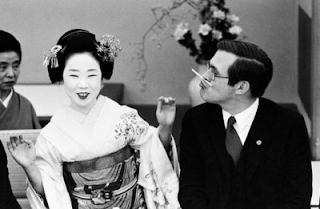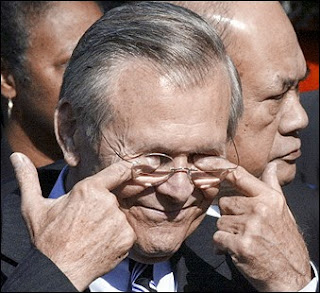
I have a
comparative review of Catherine Hakim’s Erotic Capital and
Ashley Mears’s Pricing Beauty up
at The New Inquiry. (Image possibly unsafe for work; I didn't
choose it.) Last
time I piped up here about the concept of erotic capital, I was
trying to find a way to value it. For there are parts of the theory I
find enticing—that if our culture began to value traditionally feminine
traits and skills instead of automatically denigrating them, we might
begin to see progress in arenas where sexism still thrives. I also liked
the idea that erotic capital was embodied by charisma and “people
skills,” not merely the “womanly arts” of being seductive and walking
successfully in high heels. I’m not exactly a believer in “if you’ve got
it, flaunt it,” but I’m a believer in charm, and I was ready to read an
argument that valorized it.
Unfortunately, as I point out in the review, these theories were in my head, not in Hakim’s book. When I wrote my earlier piece on erotic capital, I hadn’t yet read the book that inspired it; I now wish I’d made my point entirely separate from Erotic Capital, because Erotic Capital is tripe. Like, seriously, tripe, and not just because I disagree with most of its premises; it’s poorly written, repetitive, and defensive, and Hakim seems to have a willful misunderstanding of women's history. (Hakim isn’t the first person to attempt to discredit feminism’s most visible icon by referring to Gloria Steinem as a former Playboy bunny without acknowledging that she worked undercover for Playboy to expose their working conditions. But when it’s used to ask why more feminists haven’t embraced erotic capital—including a former Playboy bunny!—it’s particularly disingenuous.) Which is exactly why, though I’m pleased with the review and would happily write it again, I’m simultaneously chagrined with myself for taking Hakim’s bait. After reading the book, it became clear she wanted exactly the kind of argument I issued. It attacks feminism and uses the word erotic in its title; she meant for it to be a provocative argument, not a serious one. I suppose my mistake was in expecting a better argument. Lesson learned.
The real downside here, though, is that in gnawing away at Erotic Capital, I didn’t get a chance to showcase Pricing Beauty, which is excellent. I was eager to read it because it was an in-depth study of the modeling industry that didn’t immediately dismiss it as harmful to the population at large, which is what most feminist discourse regarding modeling focuses on. Mears doesn’t ignore those claims; instead, she deftly illustrates how the industry embodies the social and cultural constructs the power-holders have decided upon (even when they don’t exactly know that they’re deciding upon anything). That is: The modeling industry isn’t some weird otherworld; the modeling industry just lays bare the conditions many of us operate under every day.
A recurring theme in Pricing Beauty is how an industry can put a price tag on a product whose entire value lies in representation. How can the industry decide one 5’10” lithe, toothy brunette is worth $6,000 a day, while another 5’10” lithe, toothy brunette winds up in debt to her agency? In looking at the tastemakers who control the aesthetics of modeling—photographers, bookers, agents, and most of all clients, the people signing the bills at the end of the day—Mears shows us how even the power-holders make decisions according to what they each think the other wants, leading to an inflation among what each tastemaker anticipates will be the prized “look.” And there are plenty of ways to dissect any particular look and what those in power might gain from prizing that particular look—even when they genuinely don’t realize that they’re suddenly prizing a look that serves their cultural dictates. But we can’t do any of it unless we accept modeling A) as a legitimate industry worth studying, one with its own working conditions and peculiar rules that, along with the glamour, keep its participants hungry for its winner-take-all economic stakes, and B) as an industry that isn’t against the rest of us, but rather an embodiment of the social and cultural concerns that might get us riled up about the modeling industry in the first place.
For a sociological study that could easily have devolved into academic-ese in an effort to be taken seriously, the book is both lucid and economical; it’s a testament to the good faith in which Mears, who was working as a model while doing her research, approaches the industry, looking to be neither critical nor laudatory. Each anecdote surges toward the larger thesis, even the quotes from outliers, making the entire read seamless. I’d read Mears’ work on Jezebel before; I don’t know her background other than what’s in her bio, but the ease with which she writes over there shines through in Pricing Beauty. (Few things will turn me off quicker than writing designed to appear scholarly; this book is one of those studies that shows such style is a compensation for unclear thinking.)
It’s always tempting to treat modeling as either a terrifically glamorous world, or as the opposite—a Valley of the Dolls-type world built for disappointment and tragedy, but only after years spent in blistering high heels. Mears refuses to sensationalize modeling in either direction, acknowledging its perks (you’re a model! who gets to work in Europe sometimes!) and pitfalls (you’re a model! who may well exit the industry in debt to your agency for all the work they’ve poured into your never-launched career!) but always keeping an eye on the larger questions: What do the peculiar economics of the modeling industry say about cultural values, about gender, about privilege? In essence, what does modeling say about us? We know there's a connection; that's part of why there's such an enormous amount of attention paid to the industry, or rather, to models themselves. (Why do any of us know who Claudia Schiffer is?) That's part of why some of us internalize the messages of the modeling industry so readily. We might not need Pricing Beauty to tell us that there's a connection between the cultural production of modeling and the cultural production of ourselves, but we just might need it to help us understand why.
Unfortunately, as I point out in the review, these theories were in my head, not in Hakim’s book. When I wrote my earlier piece on erotic capital, I hadn’t yet read the book that inspired it; I now wish I’d made my point entirely separate from Erotic Capital, because Erotic Capital is tripe. Like, seriously, tripe, and not just because I disagree with most of its premises; it’s poorly written, repetitive, and defensive, and Hakim seems to have a willful misunderstanding of women's history. (Hakim isn’t the first person to attempt to discredit feminism’s most visible icon by referring to Gloria Steinem as a former Playboy bunny without acknowledging that she worked undercover for Playboy to expose their working conditions. But when it’s used to ask why more feminists haven’t embraced erotic capital—including a former Playboy bunny!—it’s particularly disingenuous.) Which is exactly why, though I’m pleased with the review and would happily write it again, I’m simultaneously chagrined with myself for taking Hakim’s bait. After reading the book, it became clear she wanted exactly the kind of argument I issued. It attacks feminism and uses the word erotic in its title; she meant for it to be a provocative argument, not a serious one. I suppose my mistake was in expecting a better argument. Lesson learned.
The real downside here, though, is that in gnawing away at Erotic Capital, I didn’t get a chance to showcase Pricing Beauty, which is excellent. I was eager to read it because it was an in-depth study of the modeling industry that didn’t immediately dismiss it as harmful to the population at large, which is what most feminist discourse regarding modeling focuses on. Mears doesn’t ignore those claims; instead, she deftly illustrates how the industry embodies the social and cultural constructs the power-holders have decided upon (even when they don’t exactly know that they’re deciding upon anything). That is: The modeling industry isn’t some weird otherworld; the modeling industry just lays bare the conditions many of us operate under every day.
A recurring theme in Pricing Beauty is how an industry can put a price tag on a product whose entire value lies in representation. How can the industry decide one 5’10” lithe, toothy brunette is worth $6,000 a day, while another 5’10” lithe, toothy brunette winds up in debt to her agency? In looking at the tastemakers who control the aesthetics of modeling—photographers, bookers, agents, and most of all clients, the people signing the bills at the end of the day—Mears shows us how even the power-holders make decisions according to what they each think the other wants, leading to an inflation among what each tastemaker anticipates will be the prized “look.” And there are plenty of ways to dissect any particular look and what those in power might gain from prizing that particular look—even when they genuinely don’t realize that they’re suddenly prizing a look that serves their cultural dictates. But we can’t do any of it unless we accept modeling A) as a legitimate industry worth studying, one with its own working conditions and peculiar rules that, along with the glamour, keep its participants hungry for its winner-take-all economic stakes, and B) as an industry that isn’t against the rest of us, but rather an embodiment of the social and cultural concerns that might get us riled up about the modeling industry in the first place.
For a sociological study that could easily have devolved into academic-ese in an effort to be taken seriously, the book is both lucid and economical; it’s a testament to the good faith in which Mears, who was working as a model while doing her research, approaches the industry, looking to be neither critical nor laudatory. Each anecdote surges toward the larger thesis, even the quotes from outliers, making the entire read seamless. I’d read Mears’ work on Jezebel before; I don’t know her background other than what’s in her bio, but the ease with which she writes over there shines through in Pricing Beauty. (Few things will turn me off quicker than writing designed to appear scholarly; this book is one of those studies that shows such style is a compensation for unclear thinking.)
It’s always tempting to treat modeling as either a terrifically glamorous world, or as the opposite—a Valley of the Dolls-type world built for disappointment and tragedy, but only after years spent in blistering high heels. Mears refuses to sensationalize modeling in either direction, acknowledging its perks (you’re a model! who gets to work in Europe sometimes!) and pitfalls (you’re a model! who may well exit the industry in debt to your agency for all the work they’ve poured into your never-launched career!) but always keeping an eye on the larger questions: What do the peculiar economics of the modeling industry say about cultural values, about gender, about privilege? In essence, what does modeling say about us? We know there's a connection; that's part of why there's such an enormous amount of attention paid to the industry, or rather, to models themselves. (Why do any of us know who Claudia Schiffer is?) That's part of why some of us internalize the messages of the modeling industry so readily. We might not need Pricing Beauty to tell us that there's a connection between the cultural production of modeling and the cultural production of ourselves, but we just might need it to help us understand why.




































